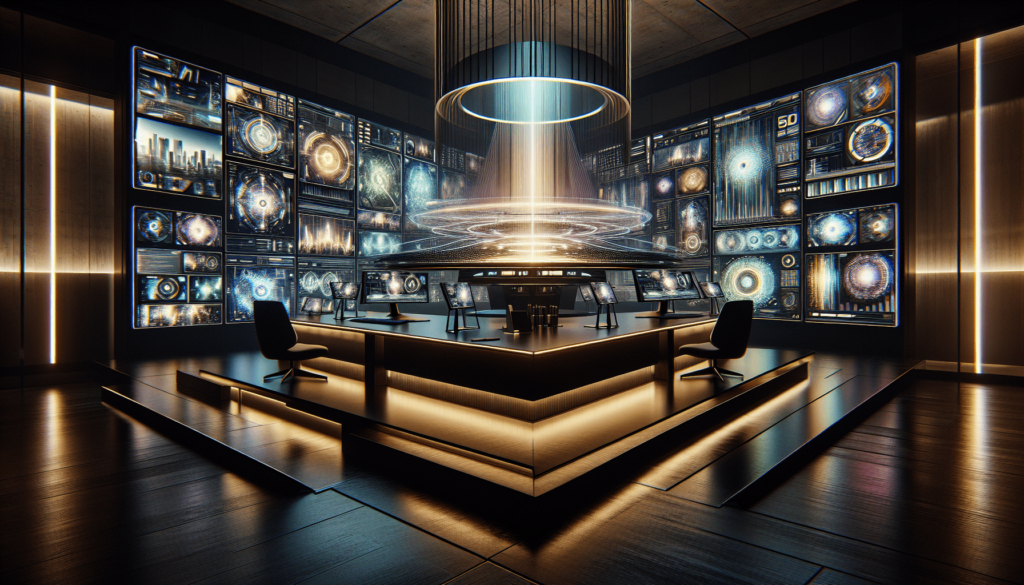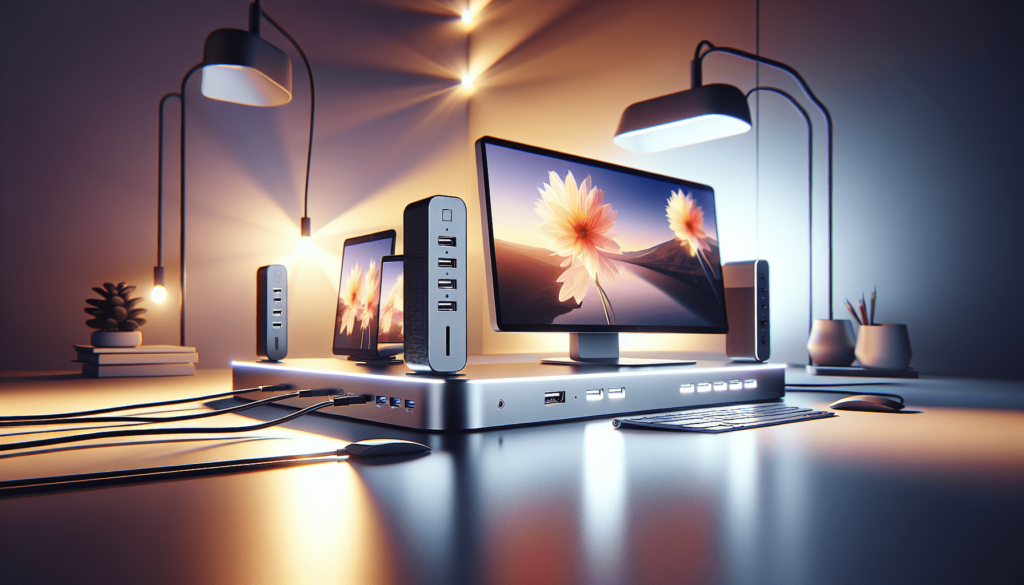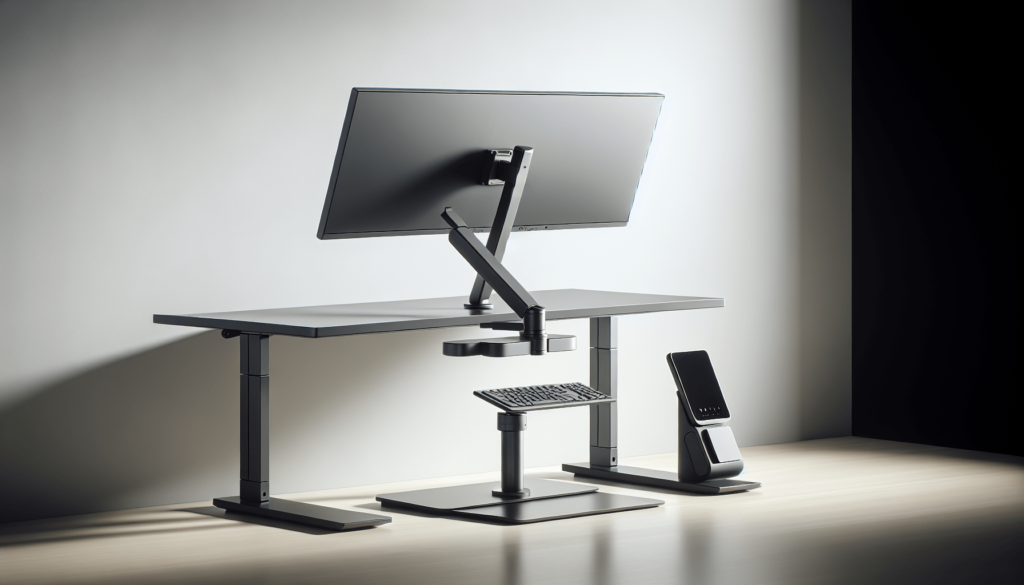Have you ever wondered how we, freelancers, might manage a successful multiscreen setup without the traditional desktop? In today’s fast-paced world, many of us are constantly on the go, and the idea of a multiscreen setup might seem out of reach. But guess what? It doesn’t have to be! We’re about to embark on a journey discussing how we can achieve an efficient multiscreen arrangement using alternatives to the classic desktop.

Why Multiscreen Setups Matter
Having more than one screen can significantly boost our productivity. The days of flipping through multiple tabs or documents on the same screen are over. With a multiscreen setup, we can have our emails open on one screen while referring to a project spreadsheet on another. It’s like having the luxury of a spacious, well-organized desk right in our pocket or laptop bag.
Advantages of Multiscreen Workstations
There are several reasons why a multiscreen setup is beneficial for freelancers. Here are some that resonate with us:
- Increased Productivity: More screens mean more visible information. We can dedicate different screens to different tasks.
- Enhanced Focus: By organizing specific tasks per screen, it becomes easier to concentrate on what’s essential.
- Better Multitasking: Switching between projects is more fluid, allowing for seamless transitions.
- Reduced Eye Strain: Staring at a small screen can be taxing, but when tasks are spread out, it decreases the flick between tasks.
Challenges for Freelancers without a Desktop
The traditional desktop setup isn’t always available for freelancers, especially those of us who travel frequently. Investing in a full-scale setup could also be financially draining or impractical when considering portability. We have unique needs that call for creative solutions so we can maintain efficiency without compromising flexibility or breaking the bank.
Your Essential Toolkit: Alternatives to Desktop Computing
Let’s dive deeper into alternative technologies and gadgets that together make up our freelancing toolkit. From devices to peripherals, there are plenty of options that allow for a multiscreen setup without relying on a desktop.
Laptops with Docking Stations
A laptop, coupled with a robust docking station, forms the heart of our mobile workstation. Docking stations allow us to connect multiple screens, incorporate external storage, connect peripherals, and charge devices simultaneously. Make no mistake; the quality of docking stations can vary, and it’s crucial to choose one that supports the video outputs your work requires.
Recommended Features:
- Connectivity: More ports equal more options—HDMI, USB-C, and Thunderbolt.
- Power Delivery: Ensure it can charge your laptop while in use.
- Compatibility: Match the station’s specifications to your laptop’s requirements.
Tablets with External Display Connectivity
Tablets are a versatile option for on-the-go work and can be a pivotal element in a multiscreen setup. With various adapters and apps, tablets can act as secondary or even tertiary displays.
Key Considerations:
- Connection Options: Check if the tablet supports HDMI or DisplayPort outputs via an adapter.
- Screen Resolution: Ensure the tablet’s resolution complements the setup for consistency.
- Software Integration: Apps like Duet Display can turn tablets into external monitors with relative ease.
Smartphones as Companion Devices
Our smartphones hold more power than we often give them credit for. They can serve as an incredible auxiliary screen when paired with the right apps, providing access to notifications, communication tools, or social media.
How to Leverage Smartphones:
- Use apps like Splashtop to mirror or extend screen content.
- Employ task management or communication apps that keep peripheral tasks organized.
Portable Monitors
Portable monitors are gaining popularity owing to their blend of functionality and ease of transport. They provide additional screens wherever we haul our gear, with varying sizes and resolutions available.
Essential Features to Look For:
- Weight and Portability: Aim for the lightweight options under 2 lbs.
- Resolution and Display Quality: Full HD is often sufficient, but higher resolutions can be invaluable for design work.
Wireless Display Adapters
These gadgets provide the capability to wirelessly connect computers, tablets, or phones to any TV or monitor with an HDMI port. They’re essential when our workspace changes often, eliminating the clutter of cables.
Benefits:
- No Cable Clutter: Enjoy a cleaner workspace.
- Easy Setup: Quick and hassle-free connections.
- Compatibility: Check if they work with your operating system.
Technical Considerations
To successfully use these tools, we must account for several technical aspects ensuring everything works in harmony.
Resolution and Display Settings
With multiple screens running, consistency between screen resolutions is vital to avoid visual disruptions. Keeping our screens aligned in terms of resolution ensures a smooth experience.
Connectivity Inputs
When considering multiple displays, the connectivity options each device offers will dictate how seamlessly they work together. Focus on compatible ports such as HDMI, USB-C, Thunderbolt, and any necessary adapters required.
Software Support
Programs that facilitate screen extensions, such as DisplayLink, are integral in synchronizing operations across different screens. Ensuring our devices are compatible with such software is critical for stable performance.
Crafting the Perfect Multiscreen Setup
Let’s map out a few practical steps that help us piece together our optimal workstation leveraging the discussed gadgets.
Assessing Our Needs
First, we identify precisely why we need a multiscreen setup. Is it for improved communication? Better data referencing? Understanding our specific requirements shapes which tools are most suitable.
Planning the Layout
Once we know what we need, we can plan how we want our setup designed. Pay attention to ergonomics and how often each screen is used. A clean layout contributes greatly to efficiency and minimizes strain.
Regular Evaluations
Technology evolves rapidly, presenting ever-improving options that could enhance our workflow. Regularly re-evaluating our gear and setup ensures we aren’t missing out on potential new efficiencies.

Managing Costs and Budget
We aim to balance high-quality displays with value, ensuring our investments are both practical and financially sound.
Identify Necessary Investments
Consider which elements truly warrant spending. Often, portable monitors and wired connectivity devices are good initial investments.
Embrace Versatility
Being selective with devices allows us to maximize utility. For example, a tablet could serve as both a reading platform and extra monitor.
Avoiding Unnecessary Expenditure
Remember that the latest gadget is not always the best investment. Focus on what genuinely meets our needs rather than being swayed by brand new releases.
Conclusion: A New Age of Freelancing
Setting up a multiscreen workstation without traditional desktops can be achieved without breaking a sweat. Whether it’s using powerful tablets, seamless docking stations, or handy wireless solutions, freelancers like us can enjoy the productivity advantages of multiple screens without the limitation of a stationary workspace.
As we continue to embrace more modern technologies, we may find ourselves at the forefront of a freelance revolution where productivity is unlimited, even when mobility seems constrained. With these tools and our relentless determination, the sky’s the limit for what we can accomplish.



